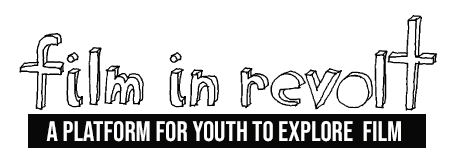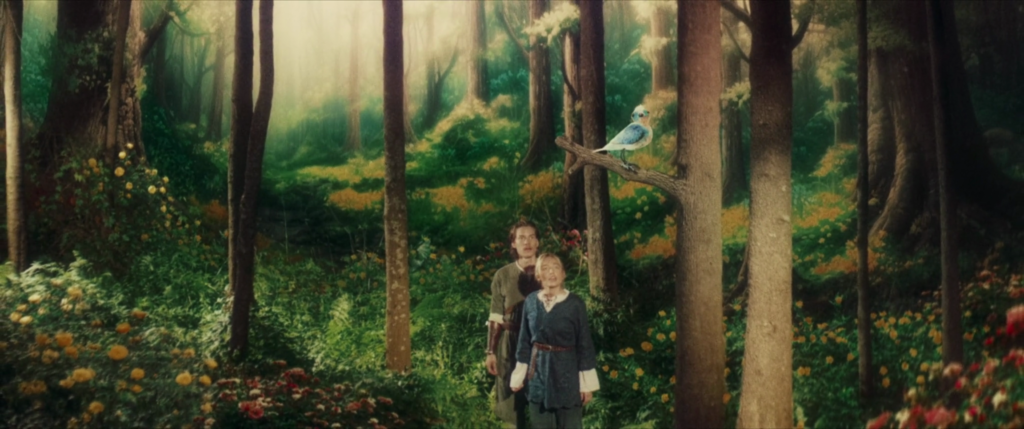
Following the incredible web series Space Rats, the talented multi-hyphenate filmmaker Darwin Schulze returns to escapism with the fantasy revenge musical Bluebird.
Flynn Boffo: So tell me how this project came about?
Darwin Schulze: Bluebird came from a place of really wanting to do something medieval, I was inspired by things like Lord of the Rings and I just wanted to dive into a medieval world. Most of the time I’ve always gravitated towards genre wanting to make things that feel out of reach of what I could normally experience.
So I set my mind on Medieval, but then I’d also been watching Sound of Music and really loved old sixties and fifties musicals and I wanted to tie together a sixties musical and a medieval world and just. Then the story of Bluebird came to mind and I was like, oh, I think that all these things can fit together and make a nice little package.
I feel a real duality there with the romanticism tied with revenge and tragedy. I found it really interesting how that opener is like a very beautiful sort of musical scene. But then the rest of it. It feels a bit grittier, it feels a bit darker, a bit more grounded.
FB: Would you like to talk us through that emotional journey?
DS: In the age of fast content you gotta grab people really quickly and that is one of the reasons why I wanted to start it off with a beautiful musical in a forest. Having that suck you into the universe you can then take that musical and turn it into a dark event taking the audience somewhere that they wouldn’t think they would end up.
I like juxtaposing those two different worlds and yeah. And trying to make them feel like they could exist together.
It’s got fairytale elements where it’s very much one person trying to save another, but it’s also taking a more modern approach where it’s saying that, violence and revenge most of the time don’t achieve the desired outcome, and they’re actually far more destructive.
There are just so many unknowns in this world, did the Prince actually deserve to be kidnapped?. There are so many moral grey areas within the medieval genre that I hope that we explored a little bit.
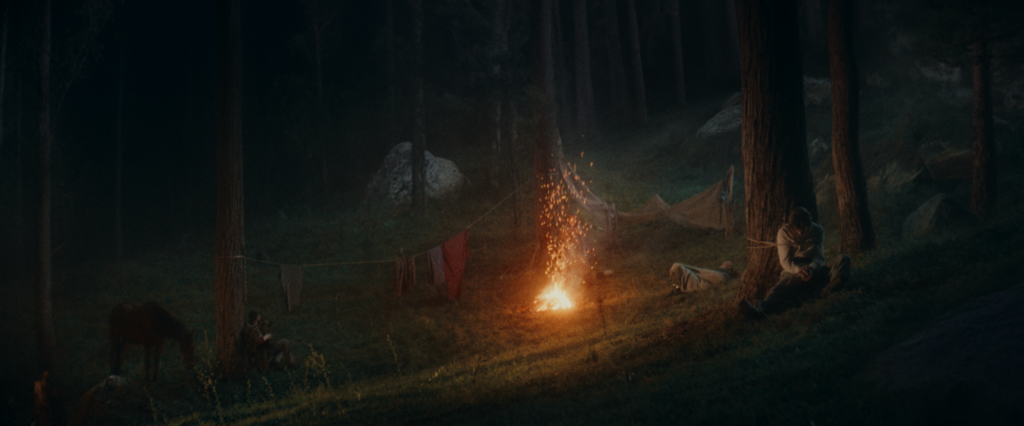
FB: I wanted to talk a little bit more about your technical approach to these films that you make. I can see a great deal of effort goes into drawing you into the aesthetic stylings of the media that inspired it. I was really interested to know how you approach the artifice of a film?
DS: It was a lot of playing around where the opening musical was. We shot on a green screen and I always knew that I was gonna put in a painted backdrop to make that look super artificial and super uncanny and make it feel like a forest built in a studio. And then it was just a matter of finding a balance in the colour grade of how far we push it into that fake, super retro look.
The musical was a real forest that we shot during the night. and it was really cold and dark. But we set up a generator and I think we had, it was the most lights I’ve used in order to get it to look super bright and super lit.
Yeah. And we had three 12 foot green screens in a row to get enough width that we could track along it. Then directly after in the movie when Annabel’s character wakes up, that’s the same location.
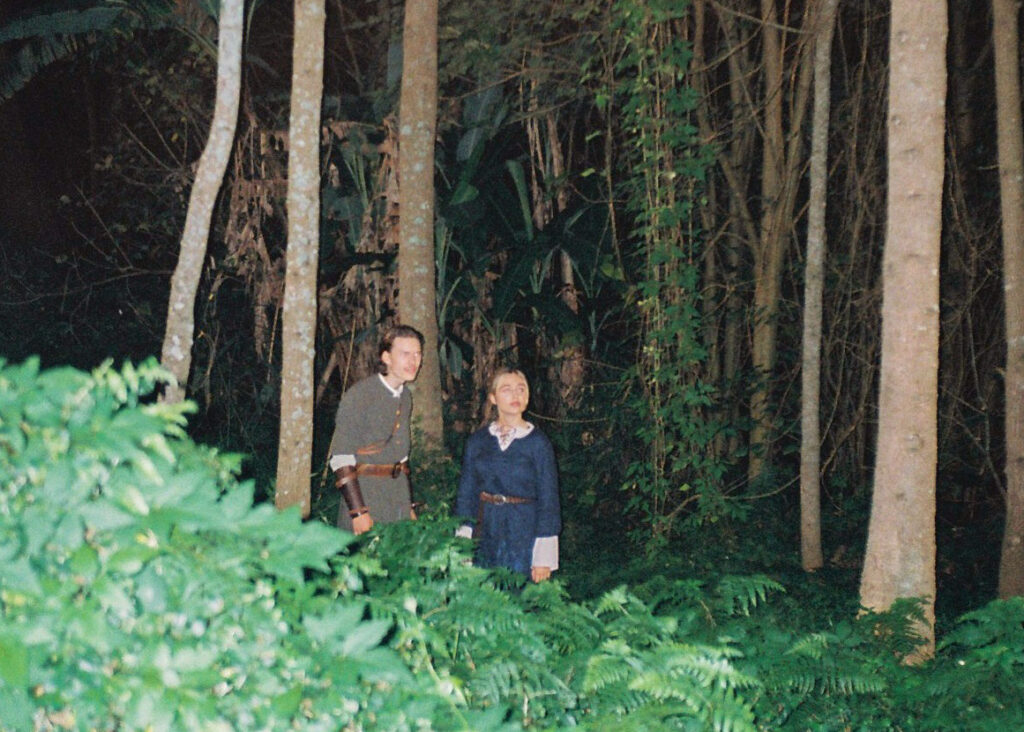
FB: I know some people are very hesitant to deconstruct their films.
DS: No, I love deconstructing. I don’t believe in gatekeeping.
FB: Another thing I was really impressed by was the animals, there are those famous examples of times where it’s very obvious that they couldn’t get a real animal and the special effect is distracting , be it the deer in Three Billboards Outside Ebbing, Missouri or the fox in the finale of Fleabag.
It was definitely not possible to get real rabbits to the locations we wanted to shoot in and even if we did you definitely couldn’t control them. I scoured all the stock video websites for ages trying to find exactly the right shots of real rabbits.
They weren’t even on green screens or anything. ’cause as soon as you shoot an animal on a green screen, then you’ve got all these problems with fur and yeah, the green spill light everywhere. So I managed to find really close shots of rabbits that had exactly the same sunlight and exactly the same ground terrain.
And then. Once it’s already closer to your shot, it’s far easier to composite ’cause you’ve got real twigs that it’s interacting with on the ground and you’ve got the real sun. So I just looked really hard to find a match.
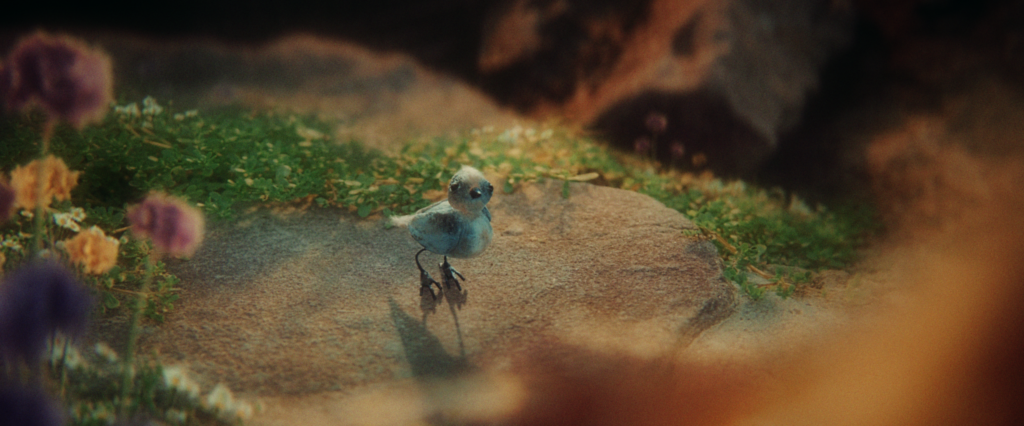
FB: Wow. I was thinking this would be a CG creature.
DS: No, I’m not good enough at cg. Nearly all the visual effects that I do is 2D composing work. I’ve never really done CGI in my life, nearly everything is. Filmed plates I just put together. It’s hundreds of hours of work there finding that perfect image. .
A lot of people think the bluebird is CGI, but that is actually a two piece puppet, so I would, it’s made out of clay and fur and. Other weird things from the spotlight, and I shot the body and the head separately on a green screen.
So the body is puppeteered from one rod. And you adjust the angle of the body. And then the head has got a different rod from underneath that you can angle. And so then by shooting the two plates separately means you’ve got far more control and post where the bird looks or the timing of everything.
And then the wings of the puppet are compositing. So every time it lands or flies away. That’s just a key frame animation of the winds coming out.
FB: You are never just one role in your films. On this film you’re the director, cinematographer, actor, editor and visual effects as well. Would you like to talk about doing multiple roles and being in many different fields at once?
DS: Since I was a kid, I’ve been so obsessed with every single element of filmmaking that I almost can’t bear to give up any of it, because to me, filmmaking is literally just about having fun and I find it so fun doing little bits of everything.
There might be a future where I just become one role, but I hope that I never give up doing a little bit of everything because it’s so fun to go and look for costumes or to get your hands dirty and build a set and paint stuff or spend hours making a little model.
I just find that stuff really fun. If I couldn’t do all the roles, I don’t know if I would be into filmmaking because there’s less range and there’s less variety and it becomes more monotonous, I think I just have always found it really fun to do as many roles as possible.
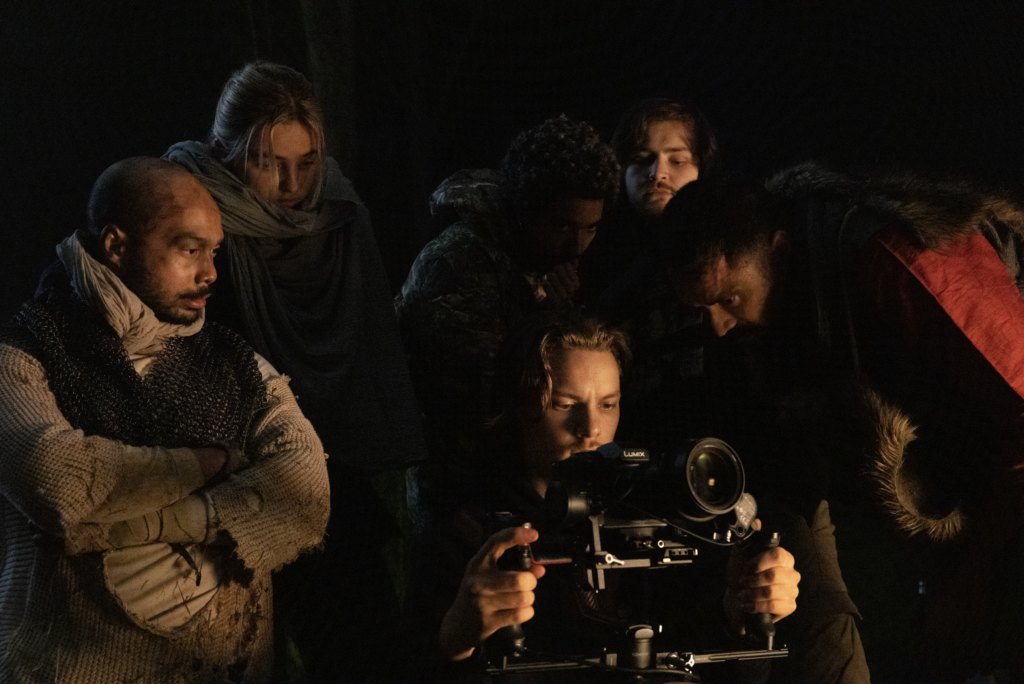
FB: How do you find the crossover between cinematography and effects and costuming, are there times where one has informed the other?
DS: Absolutely, I think one of the reasons I’ve always been able to do visual effects pretty easily is because I’m planning the visual effects from conception. I will write movies knowing exactly how I’m going to shoot and edit them. So it’s this very homogenous pipeline of everything that is smooth. There are no kinks because you’re not having all these departments clashing and arguing how to do something.
It’s a very smooth pipeline to go from conception to shooting, to visual effects, and have it all be in my own brain.
FB: For my final question, I wanted to connect this discussion back to your inspiration, what motivated you to pursue filmmaking as a young person?
DS: I think that I got into filmmaking after watching the behind the scenes of other movies. I think that there’s something so infectious about watching movies get made.
It’s scary at the same time because productions are huge. The Hellboy behind the scenes I watched a lot as a kid because there was tons of wire work and practical explosions and stuff like that I just was so drawn to.
So yeah, I think just watching a movie and then watching the behind the scenes 10 times over is what got me into this industry. It’s still magic.
Bluebird premieres this Sunday in the Sydney shorts session at the Fantastic Film Festival
You can get your tickets here.
